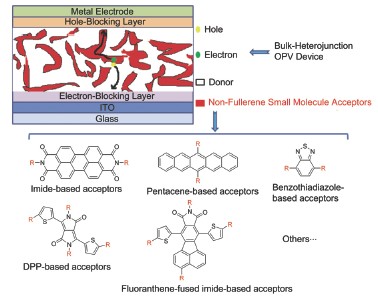化学学报 ›› 2014, Vol. 72 ›› Issue (2): 158-170.DOI: 10.6023/A13111142 上一篇 下一篇
综述
付钰, 王芳, 张燕, 方旭, 赖文勇, 黄维
Fu Yu, Wang Fang, Zhang Yan, Fang Xu, Lai Wenyong, Huang Wei

富勒烯及其衍生物是一类重要的n-型电子受体材料,在有机太阳能电池器件中发挥了至关重要的作用. 但由于富勒烯材料吸光波长较窄、亲和能高、溶解性差等,严重限制了富勒烯作为有机太阳能电池n-型电子受体材料的更广泛应用和器件性能的进一步提升. 非富勒烯n-型电子受体材料具有能级可调、合成简便、加工成本低、溶解性能优异等特点,更重要的是,此类材料在可见太阳光光谱中比富勒烯及其衍生物材料有更加宽广的吸收范围;近年来,受到越来越多的关注和研究. 本文较为系统地阐述了非富勒烯小分子材料作为有机太阳能电池n-型电子受体材料的研究进展,并对其发展前景作了展望.